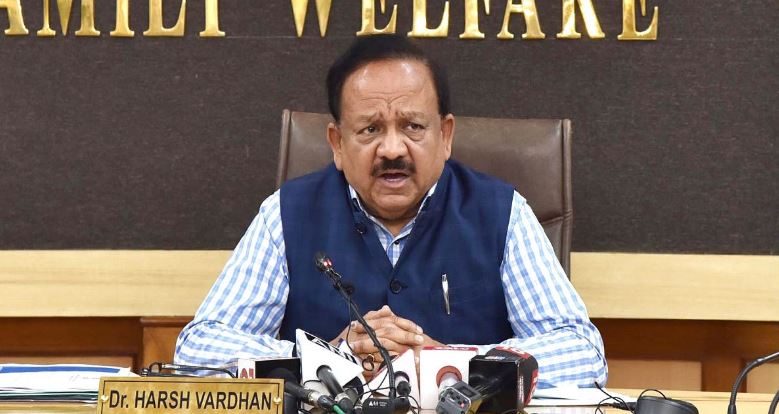National Family Health Survey: India's population stabilising as total fertility rate declines across states
Union Minister of Health and Family Welfare, Dr. Harsh Vardhan, on Tuesday, released the factsheets of key indicators on population, reproductive and child health, family welfare, nutrition and others for 22 States/Union Territories (UTs) of the First Phase of the 2019-20 National Family Health Survey (NFHS-5) on Universal Health Coverage Day on December 12, 2020.

New Delhi: Union Minister of Health and Family Welfare, Dr. Harsh Vardhan, on Tuesday, released the factsheets of key indicators on population, reproductive and child health, family welfare, nutrition and others for 22 States/Union Territories (UTs) of the First Phase of the 2019-20 National Family Health Survey (NFHS-5) on Universal Health Coverage Day on December 12, 2020.
The press release stated, "The fieldwork in the remaining 14 (Phase-II) States/UTs is currently under progress. The main objective of successive rounds of the NFHS is to provide reliable and comparable datasets on health, family welfare and other emerging issues. The NFHS-5 is being conducted in around 6.1 lakh sample households to provide disaggregated data up to district levels. And this data so generated when completed would be comparable with NFHS-4 without any loss of information."
The main objective of successive rounds of the NFHS is to provide reliable and comparable datasets on health, family welfare and other emerging issues. Four rounds of NFHS (1992-93, 1998-99, 2005-06 and 2015-16) have been successfully completed in India. All the rounds of NFHS have been conducted by the International Institute for Population Sciences (IIPS), Mumbai, as the national nodal agency. Earlier the Health Ministry itself used to conduct District Level Health Survey (DLHS) and Annual Health Survey (AHS). MoHFW has decided to conduct integrated NFHS with a periodicity of three years in lieu of different surveys from 2015-16 onwards to meet the evolving requirements for frequent, timely and appropriate data at the National, State and District levels. The NFHS-5 is being conducted in around 6.1 lakh sample households to provide disaggregated data up to district levels. And this data so generated when completed would be comparable with NFHS-4 without any loss of information.
"The state factsheet released includes information on 131 key indicators. The district-level factsheets constituting 342 districts of this Phase I States/UTs that have been uploaded on December 14, 2020 on the website of the Ministry and has information on 104 key indicators. However, NFHS-5 includes new focal areas such as expanded domains of child immunization, components of micro-nutrients to children, menstrual hygiene, frequency of alcohol and tobacco use, additional components of non-communicable diseases (NCDs), expanded age ranges for measuring hypertension and diabetes among all, aged 15 years and above, will give requisite input for strengthening existing programs and evolving new strategies for policy intervention", the release added.
On a positive note, the release stated that in almost three-fourths of districts, 70% or more children aged 12-23 months are fully immunized against childhood diseases.
However, more than half of the children and women are anaemic in 13 of the 22 States/UTs. It has also been observed that anaemia among pregnant women has increased in half of the States/UTs compared to NFHS-4
Also Read |
29 found positive for Coronavirus in India till Mar 4: Harsh Vardhan
The national-level indicators including most of the SDG health indicators are expected to be available by June/July 2021. (ANI)
 Dynamite News
Dynamite News 